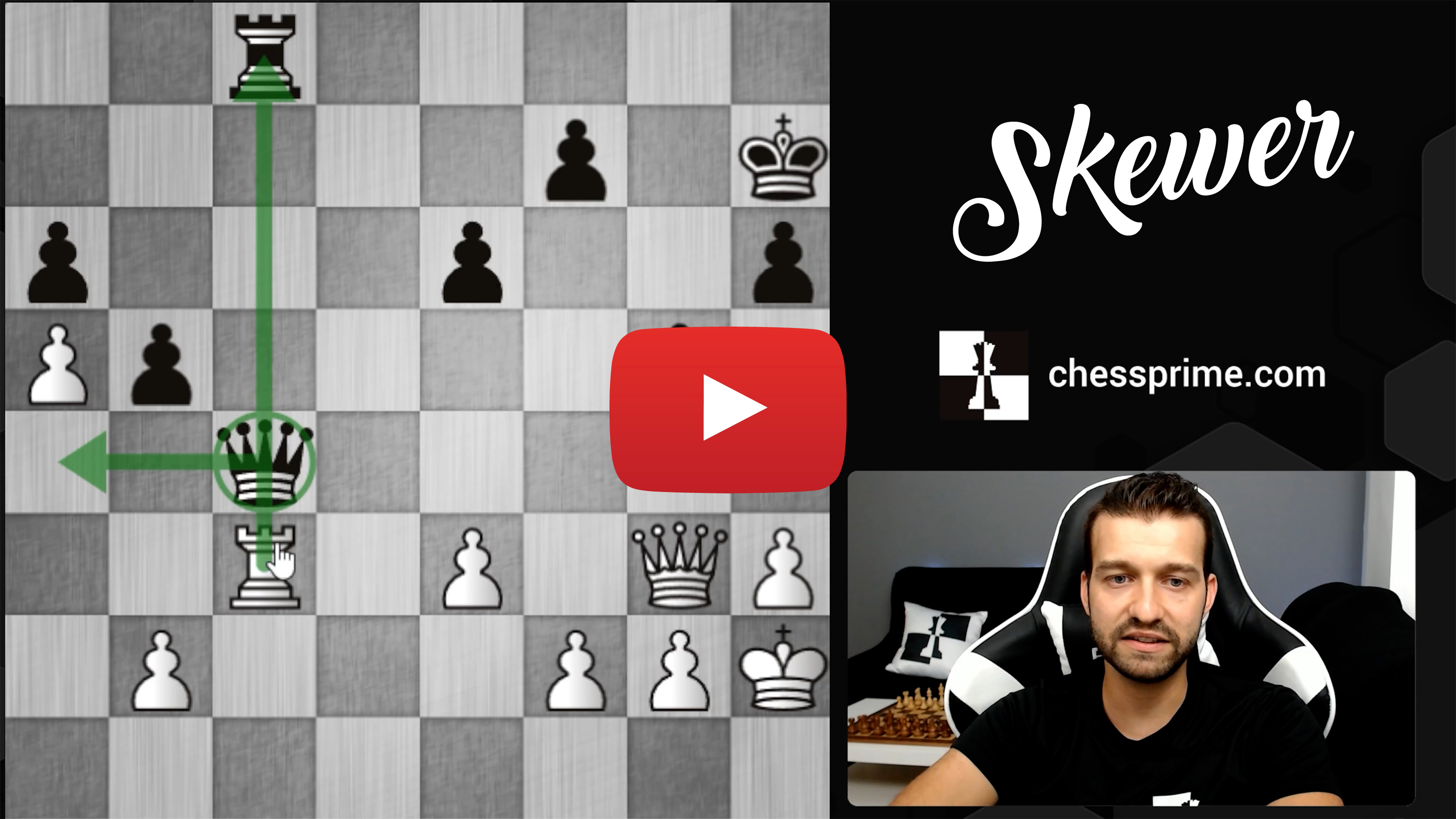What is a Skewer?
A Skewer is a tactical motif in chess where an enemy piece is forced to stay in place, usually losing material if it moves. It often occurs when a less valuable piece attacks a higher-value piece that is protecting another important piece, so moving it would result in material loss.
Key Features
- Involves an enemy piece being forced to stay in place because moving it would lose material.
- Typically involves a piece attacking a higher-value piece that protects another important piece.
- Can involve attacks on the queen, rook, king, or other key opponent pieces.
- Very effective for gaining material and creating weaknesses in the opponent’s position.
Example of a Skewer
Scenario: White moves and performs a skewer.

The black queen is on c4, the black rook on c8, and the white rook on a3. Moving the rook to c3 creates a skewer on the queen: if it moves, the rook behind it can be captured.
Move: 1. Rc3
By moving the rook to c3, the queen is forced: if it moves, the rook behind it will be lost. This tactic forces the enemy piece to make difficult decisions and allows you to gain material.
